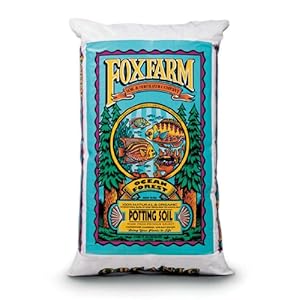 |
| Courtesy of http://chiotsrun.com |
What is soil? To be technical, soil is the most outer layer of the Earth's crust, in which plants take root. Soil is made up of weathered rock and minerals, as well as organic material such as decomposed animal and plant matter. Because soil is formed from so many different particles, it has different qualities and characteristics based on location. These qualities play a vital role to the health of your plant; for example, if you watered your plant as if you had sandy, desert soil in a location that was higher in clay, the plant would surely drown. Also, soils higher in organic material tend to have a higher pH, meaning more acidic soil, and the possibility of nutrient lockout (Nutrient discussion is for another day, however).
Listed below are some of the different types of soil you may encounter when creating your own Backyard Grow:
Sandy Soil- If you grow or plan on growing in an arid or desert region, this is the soil you will be faced with. Sand is formed primarily from weathering of rocks, so this soil is very poor in natural fertility. Because of the nature of sand's small particles, water drains very easily from this soil, meaning your plants will need extra water during the hotter months of the grow season. On the flip side, because of the drier soil, root drowning and other root problems should not appear.
Silty Soil- Only a select few will have access to this soil, and they are quite lucky. Silty soil is formed through rivers or other bodies of water depositing minerals and nutrients over time. Like sand, it can be fine and granular, but unlike sand it retains water and nutrients much better. Silt is only available to those in fortunate geographic locations, so if you can take advantage of this rich natural resource, I advise it!
Clay Soil- As you may have guessed from my example, clay soil has much less draining power than sand or silt. Because of this major drawback, exclusive clay soil is almost never used. To be effective, clay has to be used with sand, silt, or organic material to provide proper drainage and nutrients. If too much clay is in your soil, you will see your plants suffer from waterlogged roots, and possibly root fungi.
Loamy Soil- This soil is the ultimate; it is a combination of all of the above into one glorious mixture of dirt. Loam combines the water draining of sand with the rich nutrients of silt, and the water retention of clay to make a nutrient rich soil with proper retention and drainage. If you manage to come across this soil in your backyard, consider it your destiny to grow something in this rich medium.
Peaty Soil- Peat is exclusively formed from decaying and decomposed organic matter. As you would imagine, it is very rich in nutrients, and makes a great additive for any soil. Because of its high organic content, though, it is much more acidic than any other soil, and is better utilized as an additive to an existing soil profile. Additionally, organic material requires nitrogen to decompose (see: Nitrogen Cycle), which means in larger amounts, said organic material will be in direct competition with your Cannabis plant for precious nitrogen.
Now you know a little more about the dirt you'll be growing in, but you may be asking what to do if you aren't fortunate enough to have a rich and loamy backyard, a question that I can answer from personal experience.
As a desert grower, I was initially faced with poor sandy soil, but I knew what I had to do. As a general treatment for each hole, I added FoxFarm® Ocean Forest® potting soil. This soil is high in organic material and nutrients, while also being light and aerated, pretty much being the perfect additive to sandy and infertile soil. If Ocean Forest® does not provide sufficient plant nutrition, or if it provides too much organic material, consider adding blood meal or bone meal to the soil, as that will increase respective levels of insoluble nitrogen and phosphorus.
 |
| Ocean Forest® Potting Soil, one of the highest quality soil additives |
So in conclusion, a healthy soil profile for your plants is one that drains sufficiently (but not excessively) and contains organic material and nutrition for optimal growth. Due to the wide variance in soil, it will be up to you to determine what should be added or detracted to improve soil quality. As always, I am standing by to do my best to answer any and all questions you may have. I leave you with a few soil related tips, and remind you all to take after your plants and stay healthy.
*Some soils attract different insects than others; recognize your soil type to best combat insect invaders
*Too much water in the soil is as harmful as not enough water
*Experiment with manure and compost; Your soil will improve over time as more and more matter decays
No comments:
Post a Comment